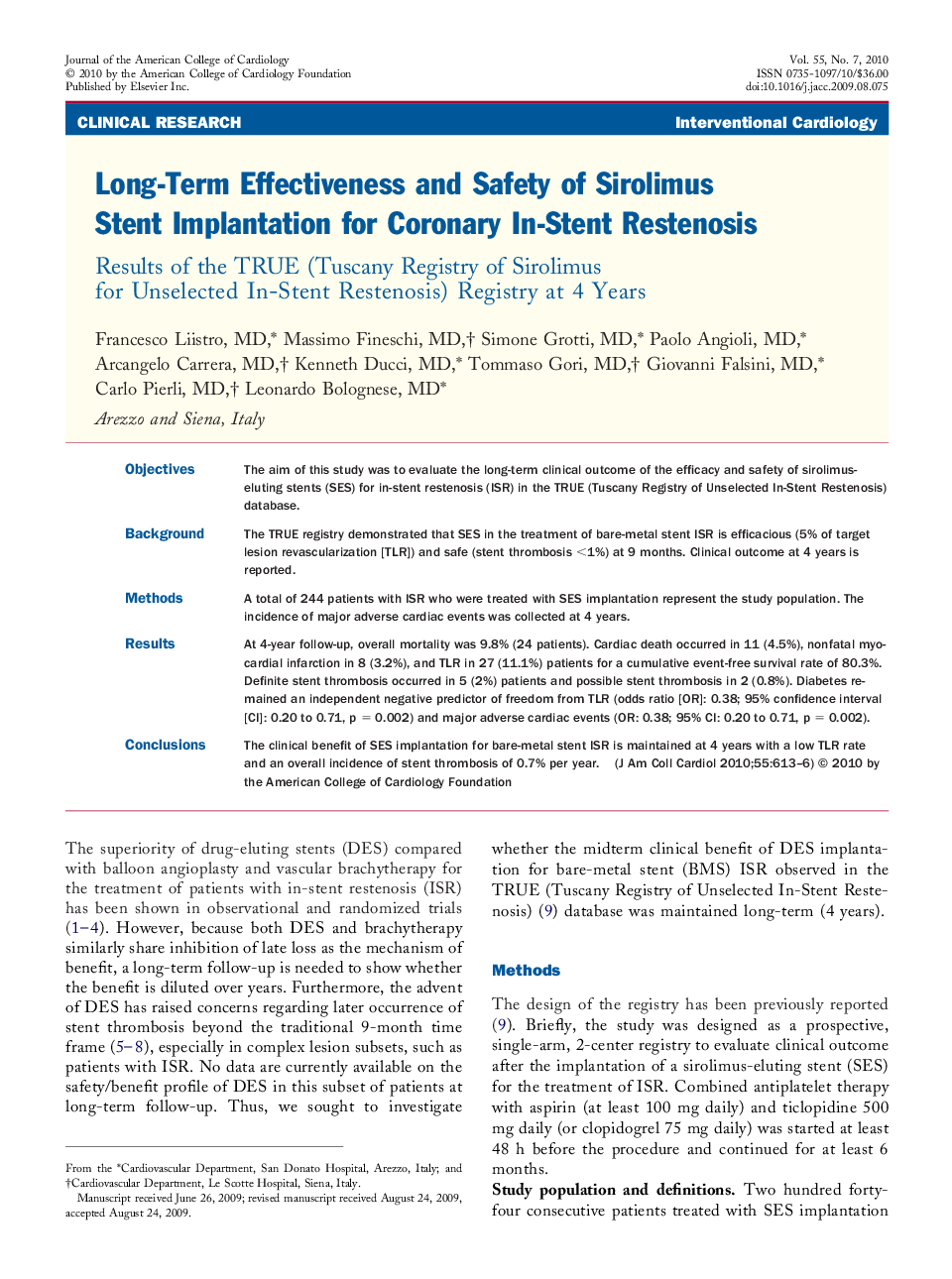| Article ID | Journal | Published Year | Pages | File Type |
|---|---|---|---|---|
| 2949786 | Journal of the American College of Cardiology | 2010 | 4 Pages |
ObjectivesThe aim of this study was to evaluate the long-term clinical outcome of the efficacy and safety of sirolimus-eluting stents (SES) for in-stent restenosis (ISR) in the TRUE (Tuscany Registry of Unselected In-Stent Restenosis) database.BackgroundThe TRUE registry demonstrated that SES in the treatment of bare-metal stent ISR is efficacious (5% of target lesion revascularization [TLR]) and safe (stent thrombosis <1%) at 9 months. Clinical outcome at 4 years is reported.MethodsA total of 244 patients with ISR who were treated with SES implantation represent the study population. The incidence of major adverse cardiac events was collected at 4 years.ResultsAt 4-year follow-up, overall mortality was 9.8% (24 patients). Cardiac death occurred in 11 (4.5%), nonfatal myocardial infarction in 8 (3.2%), and TLR in 27 (11.1%) patients for a cumulative event-free survival rate of 80.3%. Definite stent thrombosis occurred in 5 (2%) patients and possible stent thrombosis in 2 (0.8%). Diabetes remained an independent negative predictor of freedom from TLR (odds ratio [OR]: 0.38; 95% confidence interval [CI]: 0.20 to 0.71, p = 0.002) and major adverse cardiac events (OR: 0.38; 95% CI: 0.20 to 0.71, p = 0.002).ConclusionsThe clinical benefit of SES implantation for bare-metal stent ISR is maintained at 4 years with a low TLR rate and an overall incidence of stent thrombosis of 0.7% per year.
